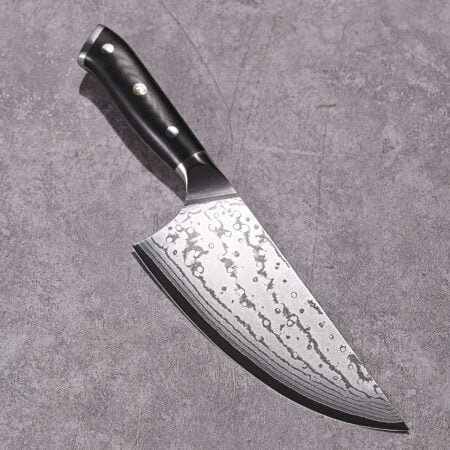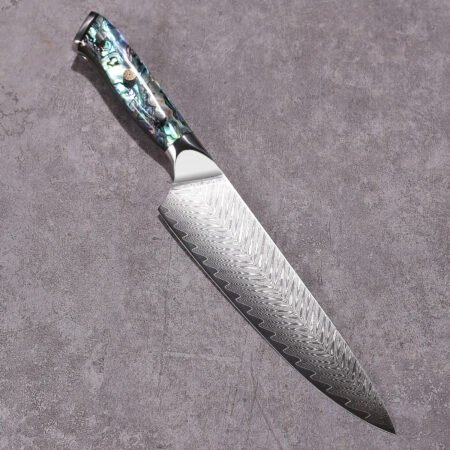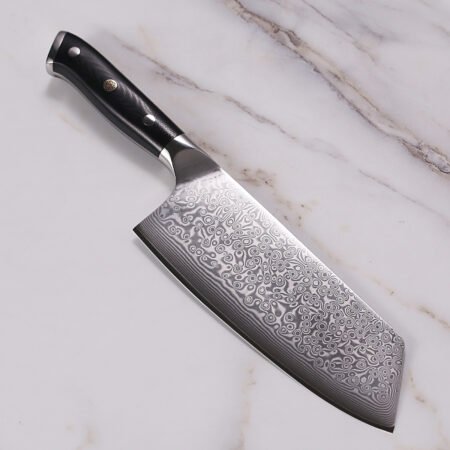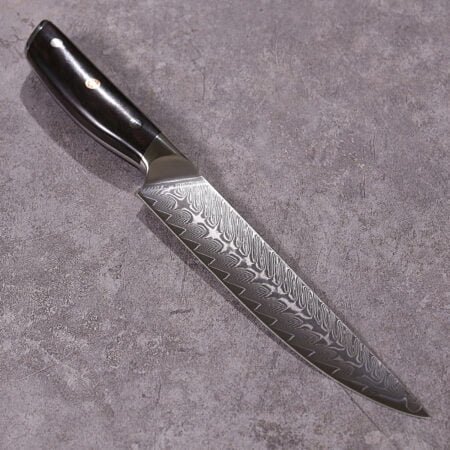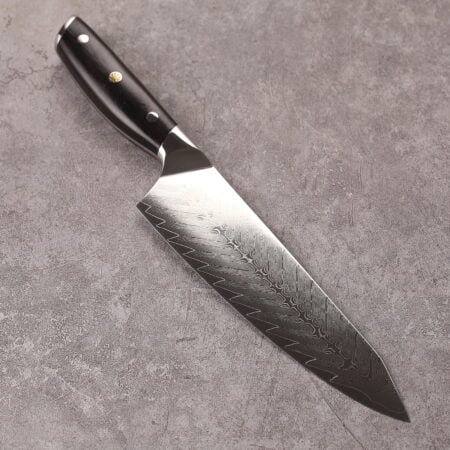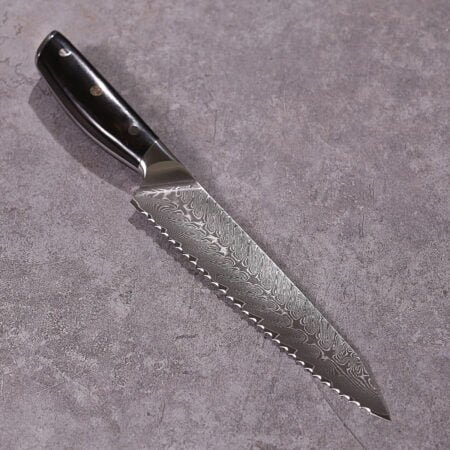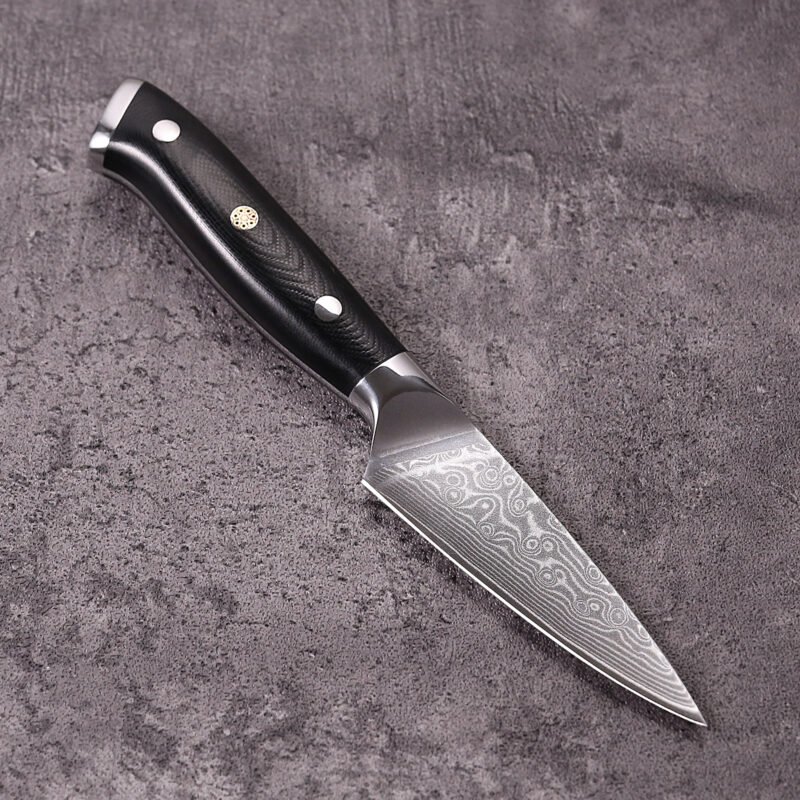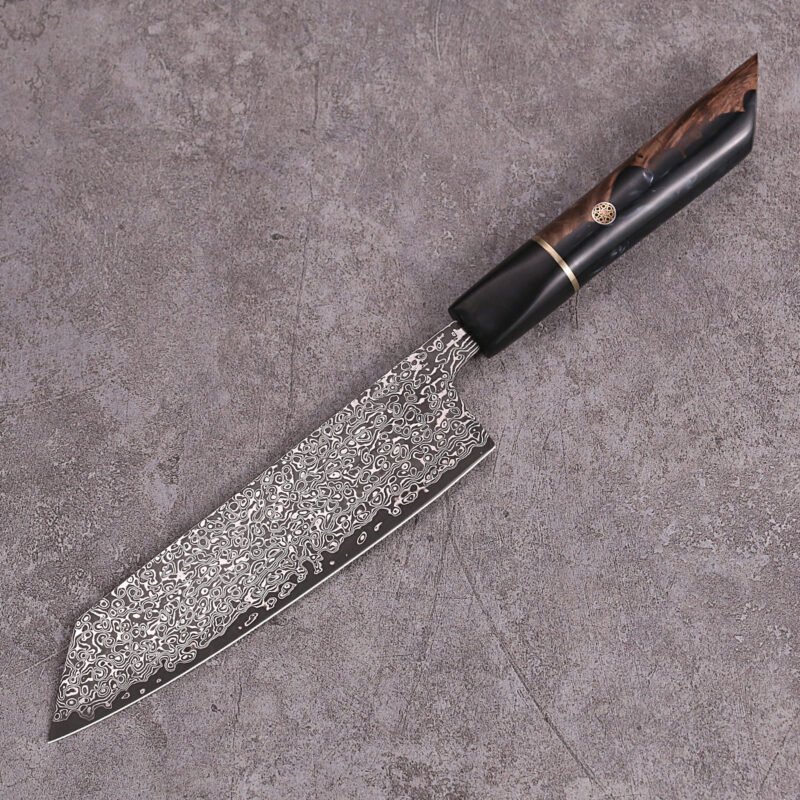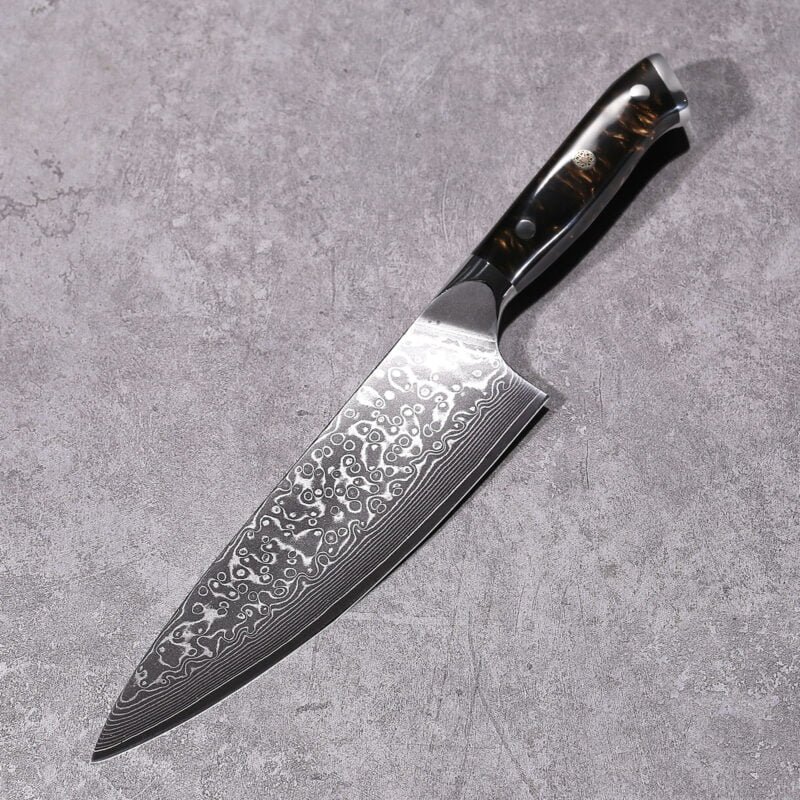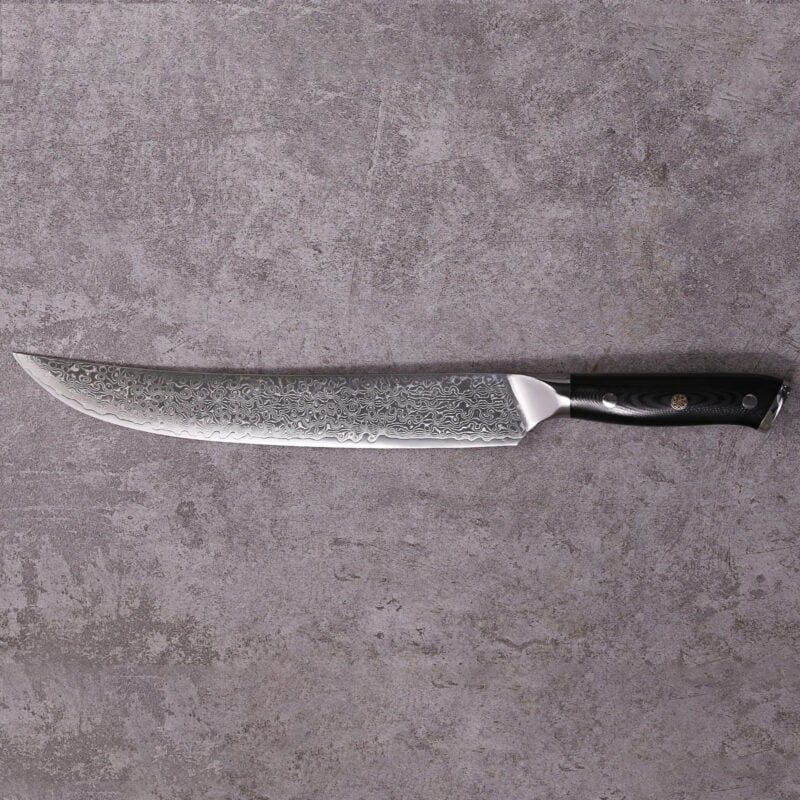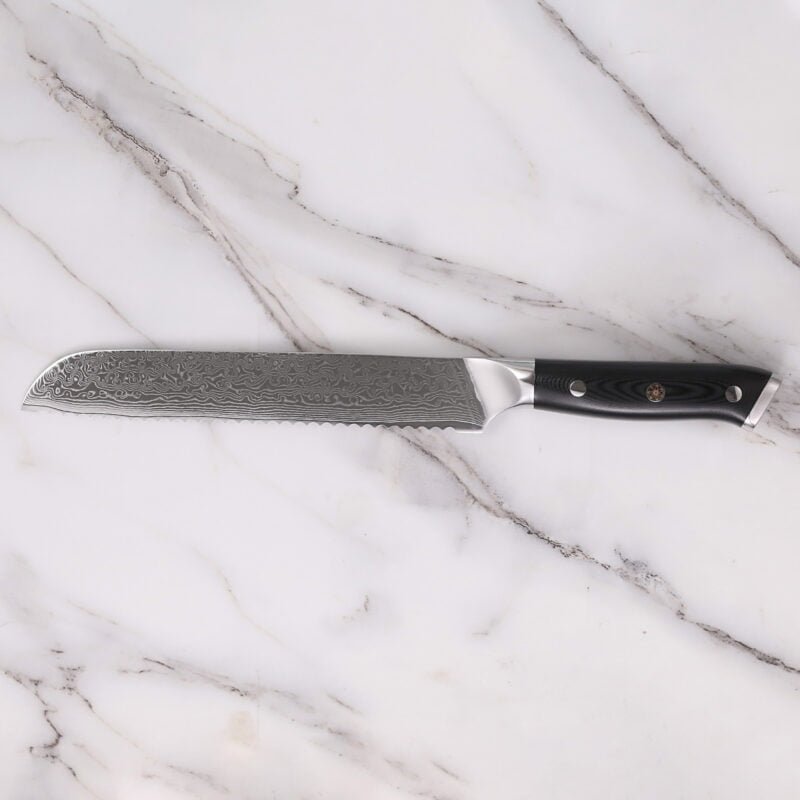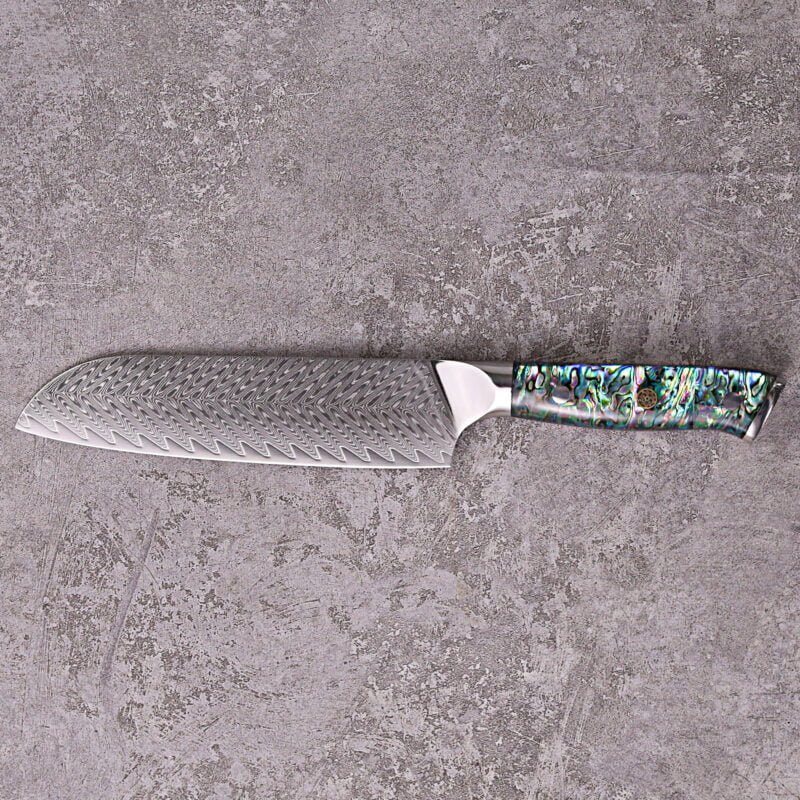Honing Steel vs. Whetstone – Choosing the Right Technique

Table of Contents
To sharpen a dull knife, you can use either a honing steel or a whetstone. Here’s a comparison of the two methods:
Honing Steel:

- Hold the honing steel upright with the tip resting on a stable surface.
- Hold the knife at a 20-degree angle against the steel, with the heel of the blade near the handle.
- With light pressure, draw the knife down the length of the steel while maintaining the angle. Start from the base of the blade and move towards the tip.
- Repeat this motion on both sides of the blade, alternating between sides.
- Perform this honing process regularly to realign the knife’s edge and maintain its sharpness. Honing steel is more suitable for regular maintenance and edge alignment rather than actual sharpening.
Whetstone:

- Soak the whetstone in water for the recommended amount of time, usually around 10 to 15 minutes.
- Place the whetstone on a stable surface with the coarser side facing up.
- Hold the knife at a consistent angle, typically 15 to 20 degrees, against the stone’s surface.
- Starting from the base of the blade, gently slide the knife across the stone while maintaining the angle. Apply slight pressure and move the knife in a sweeping motion, covering the entire length of the blade.
- Repeat this process on the other side of the blade, alternating between sides.
- After sharpening on the coarse side, flip the stone to the finer side and repeat the process to refine the edge.
- Rinse the knife thoroughly to remove any metal particles and test its sharpness.
Comparison Honing Steel & Whetstone
- Honing with a steel is a quick process that helps maintain the sharpness of a knife by realigning the edge. It does not remove metal from the blade but rather straightens it.
- Sharpening with a whetstone involves removing metal to create a new, sharp edge. It is more suitable for restoring a dull blade or maintaining a precise edge.
- Whetstones offer greater control and flexibility in terms of the sharpening angle and the level of sharpness achieved.
- Honing steel is generally easier to use and requires less skill and practice compared to sharpening with a whetstone.
- Whetstones allow for more precise sharpening, making them suitable for professional chefs or individuals who prioritize the highest level of sharpness.
Ultimately, the choice between a honing steel and a whetstone depends on the level of sharpening required and personal preference. For regular maintenance and minor touch-ups, a honing steel is often sufficient. However, for more significant sharpening or when a high level of sharpness is desired, a whetstone provides better results.
Dull knives are more dangerous
- Increased force: When using a dull knife, you need to exert more force to cut through objects. This increased force can lead to slips or the knife suddenly giving way, causing accidents. With a sharp knife, less force is required, making it easier to control the cutting motion.
- Unpredictable movements: Due to the increased force needed, a dull knife may cause the blade to slip off the surface of the object being cut. This can result in the knife veering off in an unintended direction, potentially causing injuries to the user or others nearby.
- Slippage during cutting: A dull blade may not easily penetrate the surface of food items or other objects. As a result, when you apply pressure and the blade finally makes contact, it can slip unexpectedly, leading to accidental cuts.
- Uneven cuts: Dull knives are more likely to create jagged or uneven cuts, as they tend to tear or crush the material being cut rather than slicing cleanly through it. This can be problematic when trying to control the size and shape of the cut, potentially leading to accidents or inconsistencies in food preparation.
- Increased effort and fatigue: Using a dull knife requires more effort and repeated motions, as you need to saw or push harder to achieve the desired cut. This can lead to fatigue, reducing your control and coordination, and increasing the risk of accidents.
It is important to note that while a sharp knife can cause more severe injuries due to its ability to cut through objects easily, it is generally considered safer to use because it allows for better control and reduces the likelihood of accidents occurring. Proper handling, storage, and maintenance of knives are essential for ensuring their safe use.
Buy Sharp Knives at Knife Forest
At Knife Forest, we understand the importance of personalization and branding. That’s why we offer the option for custom logos and designs on our knives, allowing our customers to showcase their own brand or create a truly one-of-a-kind piece. Whether you’re a professional chef looking to elevate your kitchen arsenal or a passionate home cook seeking a personalized gift, we are here to bring your vision to life.
